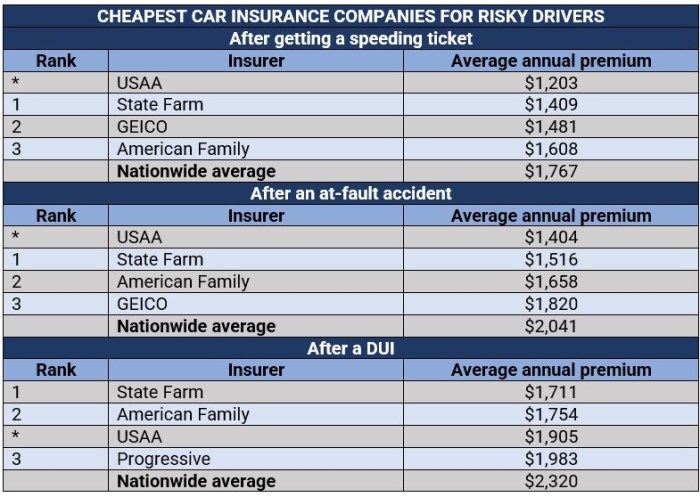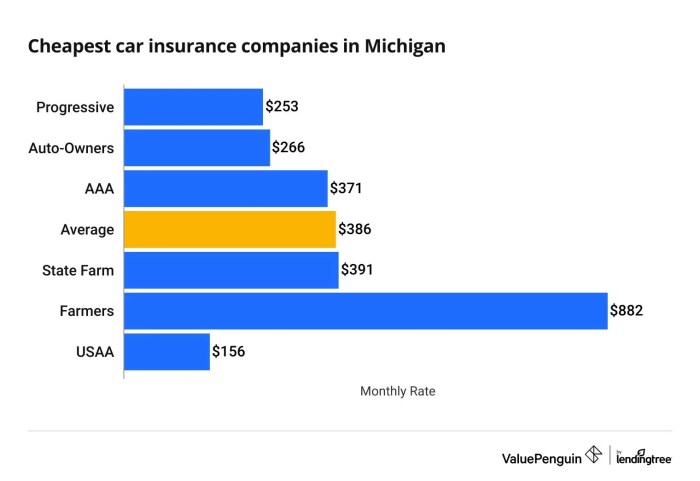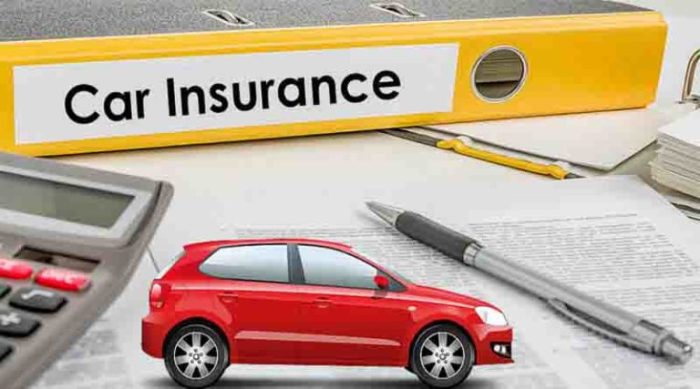Securing affordable auto insurance is a crucial yet often daunting task. Navigating the complexities of coverage options, premiums, and provider comparisons can feel overwhelming. This guide aims to demystify the process, providing you with the knowledge and tools to find cheap automobile insurance companies that meet your specific needs without compromising on essential protection. We’ll explore the factors influencing insurance costs, identify reputable providers offering competitive rates, and equip you with strategies to significantly lower your premiums.
From understanding the nuances of different coverage levels to mastering the art of comparing quotes, we’ll walk you through each step, empowering you to make informed decisions and secure the best possible value for your auto insurance. Ultimately, the goal is to help you find reliable, affordable coverage that provides peace of mind on the road.
Factors Affecting Insurance Premiums

Securing affordable auto insurance involves understanding the key factors that influence premium costs. These factors are often interconnected, and a change in one can significantly impact your overall rate. This section details the major elements that insurance companies consider when calculating your premium.
Driving History’s Impact on Premiums
Your driving record is a primary determinant of your insurance premium. A clean driving history, characterized by the absence of accidents and traffic violations, generally results in lower premiums. Conversely, accidents and tickets significantly increase your risk profile in the eyes of insurers, leading to higher premiums. The severity of the accident or violation further influences the increase; a major accident with injuries will likely result in a more substantial premium increase than a minor fender bender or a speeding ticket. For instance, a driver with multiple at-fault accidents within a short period might face premiums significantly higher than those of a driver with a spotless record. Insurance companies use sophisticated algorithms that weigh the frequency and severity of incidents to calculate risk and adjust premiums accordingly.
Age, Gender, and Location Influence on Rates
Insurers consider age, gender, and location as significant factors when assessing risk. Statistically, younger drivers (typically under 25) are involved in more accidents than older drivers, resulting in higher premiums for this demographic. Gender also plays a role, with some studies suggesting variations in accident rates between genders, although this is a complex and often debated topic. Location significantly impacts premiums due to variations in accident rates, theft rates, and the cost of repairs. Areas with high crime rates or frequent accidents will generally have higher insurance premiums compared to areas with lower risk profiles. For example, a driver residing in a densely populated urban area with a high crime rate might pay considerably more than a driver in a rural area with a low crime rate, even if their driving records are identical.
Vehicle Type and Value’s Effect on Premiums
The type and value of your vehicle directly influence your insurance premiums. Higher-value vehicles are more expensive to repair or replace, leading to higher insurance costs. The type of vehicle also matters; sports cars and high-performance vehicles often attract higher premiums due to their increased risk of accidents and higher repair costs. Conversely, smaller, less expensive vehicles typically result in lower premiums. For example, insuring a luxury SUV will generally cost more than insuring a compact sedan, even if both vehicles are driven by the same person with the same driving record. The vehicle’s safety features also play a role; cars with advanced safety technologies might qualify for discounts, offsetting some of the cost associated with the vehicle’s value.
Comparison of Insurance Quotes

Finding the cheapest car insurance can feel overwhelming with so many companies offering various plans. Comparing quotes effectively is crucial to securing the best value for your money. This involves more than just looking at the bottom-line price; a thorough comparison considers several key aspects to ensure you’re getting adequate coverage at a reasonable cost.
The process of comparing auto insurance quotes involves systematically reviewing offers from different providers, focusing on key factors to make an informed decision. This ensures you choose a policy that best suits your needs and budget, rather than simply opting for the cheapest option without considering its limitations.
Key Factors for Evaluating Auto Insurance Quotes
When comparing quotes, don’t just focus on the price. Consider the following factors to ensure you’re getting comprehensive protection at a competitive rate. Ignoring these factors could lead to inadequate coverage and potential financial hardship in the event of an accident.
A balanced approach prioritizes finding the right combination of price and coverage. While a lower premium is attractive, insufficient coverage could prove far more expensive in the long run. Consider the level of risk you’re willing to accept and choose a policy that reflects that.
| Factor | Description | Importance |
|---|---|---|
| Coverage Levels | Compare liability limits, collision, comprehensive, uninsured/underinsured motorist coverage, etc. Higher limits generally mean higher premiums but better protection. | High – Inadequate coverage can lead to significant out-of-pocket expenses in an accident. |
| Premium Price | The total cost of the insurance policy over a specific period (usually 6 months or a year). | High – The most obvious factor, but should not be the only one considered. |
| Deductibles | The amount you pay out-of-pocket before your insurance coverage kicks in. Higher deductibles generally mean lower premiums. | Medium – Balancing affordability with the ability to cover a deductible is crucial. |
| Customer Service | Consider the company’s reputation for responsiveness, ease of claims filing, and overall customer satisfaction. | Medium – A good customer experience can make a significant difference during a stressful claim process. |
| Discounts | Many insurers offer discounts for safe driving, bundling policies, good student status, etc. Check if you qualify for any. | Medium – Discounts can significantly reduce the overall cost. |
Sample Quote Comparison
Below is a comparison of three hypothetical auto insurance quotes from different providers. Remember that actual quotes will vary depending on your individual circumstances and location.
| Insurance Company | Annual Premium | Liability Coverage | Deductible (Collision) |
|---|---|---|---|
| Company A | $1200 | $100,000/$300,000 | $500 |
| Company B | $1000 | $50,000/$100,000 | $1000 |
| Company C | $1300 | $100,000/$300,000 | $250 |
Reading and Understanding Insurance Policies

Understanding your auto insurance policy is crucial for protecting yourself financially in the event of an accident or other covered incident. A thorough review ensures you know what’s covered, what’s excluded, and how to file a claim effectively. Failing to understand your policy could lead to delays in receiving compensation or even denial of your claim.
Your auto insurance policy is a legally binding contract. It Artikels the agreement between you (the policyholder) and the insurance company. This document details the coverage you purchased, the premiums you pay, and the responsibilities of both parties. Careful reading will prevent misunderstandings and ensure you receive the coverage you expect.
Key Terms and Definitions
Insurance policies often use specific terminology that can be confusing. Familiarizing yourself with these common terms is essential for understanding your policy’s scope and limitations.
- Premium: The amount you pay regularly to maintain your insurance coverage.
- Deductible: The amount you pay out-of-pocket before your insurance coverage kicks in.
- Liability Coverage: Protection against financial responsibility for bodily injury or property damage caused to others in an accident.
- Collision Coverage: Coverage for damage to your vehicle resulting from a collision, regardless of fault.
- Comprehensive Coverage: Coverage for damage to your vehicle caused by events other than collisions, such as theft, vandalism, or natural disasters.
- Uninsured/Underinsured Motorist Coverage: Protection if you’re involved in an accident with a driver who lacks sufficient insurance.
- Policy Period: The timeframe during which your insurance coverage is active.
- Claim: A formal request for payment under your insurance policy after an accident or covered event.
Filing a Claim
The claims process varies slightly depending on the insurance company, but generally involves these steps:
1. Report the incident: Immediately report the accident to your insurance company, providing details such as the date, time, location, and individuals involved.
2. Gather information: Collect all relevant information, including police reports (if applicable), witness statements, and photos of the damage.
3. Submit a claim: Follow your insurer’s instructions for submitting a claim, usually involving completing a claim form and providing supporting documentation.
4. Cooperate with the investigation: Your insurance company may investigate the claim to verify the details and assess the damages. Cooperate fully with their requests for information.
5. Receive payment: Once the claim is approved, you will receive payment for the covered damages, minus your deductible.
Required Documentation for Claim Filing
To ensure a smooth and efficient claims process, it’s essential to have the following documents ready:
- Police report (if applicable): A police report is crucial for documenting the accident and establishing liability.
- Photos and videos of the damage: Visual documentation of the damage to your vehicle and the accident scene is vital.
- Witness statements: Statements from anyone who witnessed the accident can support your claim.
- Medical records (if applicable): If injuries are involved, medical records are necessary to substantiate the claim.
- Repair estimates: Obtain estimates from reputable repair shops to assess the cost of repairs.
- Your insurance policy information: Have your policy number and other relevant details readily available.
Wrap-Up
Finding cheap automobile insurance doesn’t mean sacrificing necessary protection. By understanding the factors influencing premiums, comparing quotes effectively, and employing cost-saving strategies, you can secure affordable coverage that aligns with your budget and risk tolerance. Remember to carefully review policy details and choose a provider with a strong reputation for customer service. Armed with the right knowledge, you can confidently navigate the world of auto insurance and find the best deal without compromising your safety and financial security.
FAQ Guide
What is the difference between liability and collision coverage?
Liability coverage pays for damages you cause to others’ property or injuries you inflict on others in an accident. Collision coverage pays for repairs to your vehicle, regardless of fault, in an accident.
How often can I expect my insurance rates to change?
Insurance rates can change annually, or even more frequently, depending on your driving record, claims history, and other factors. Review your policy regularly.
Can I get discounts if I bundle my auto and home insurance?
Yes, many insurers offer discounts for bundling multiple insurance policies with them.
What is a deductible?
A deductible is the amount you pay out-of-pocket before your insurance coverage kicks in for a claim.
What happens if I have an accident and my insurance doesn’t cover the damages?
If your coverage is insufficient, you may be personally liable for the remaining costs. This could lead to significant financial burdens. Ensure you have adequate coverage.